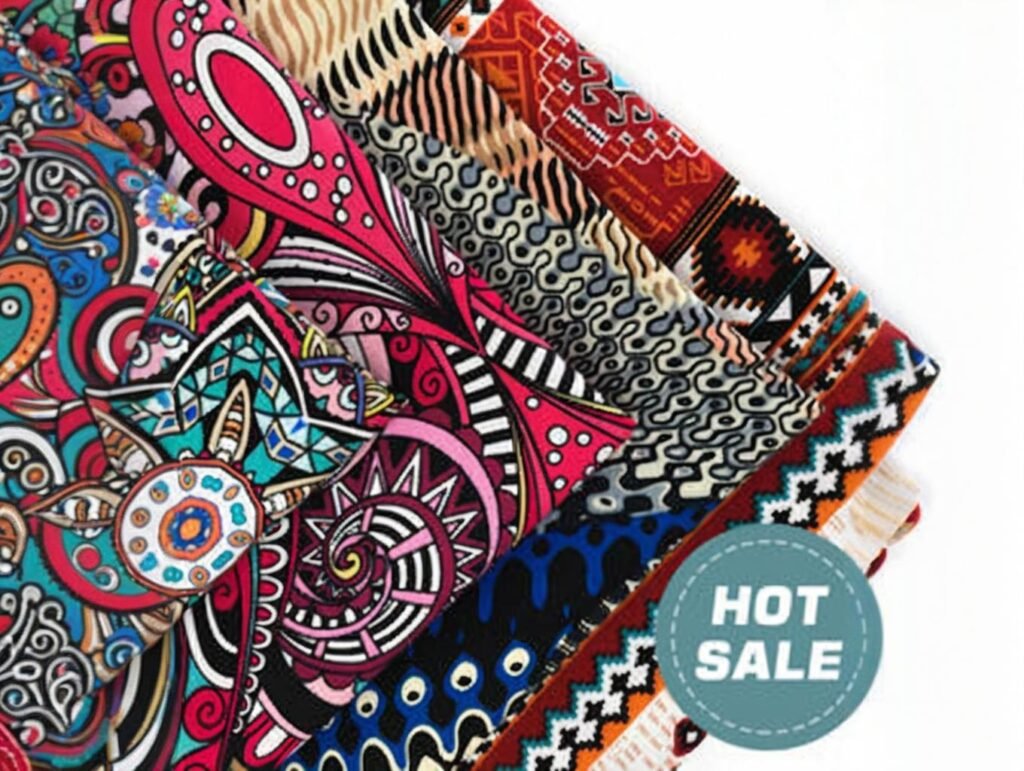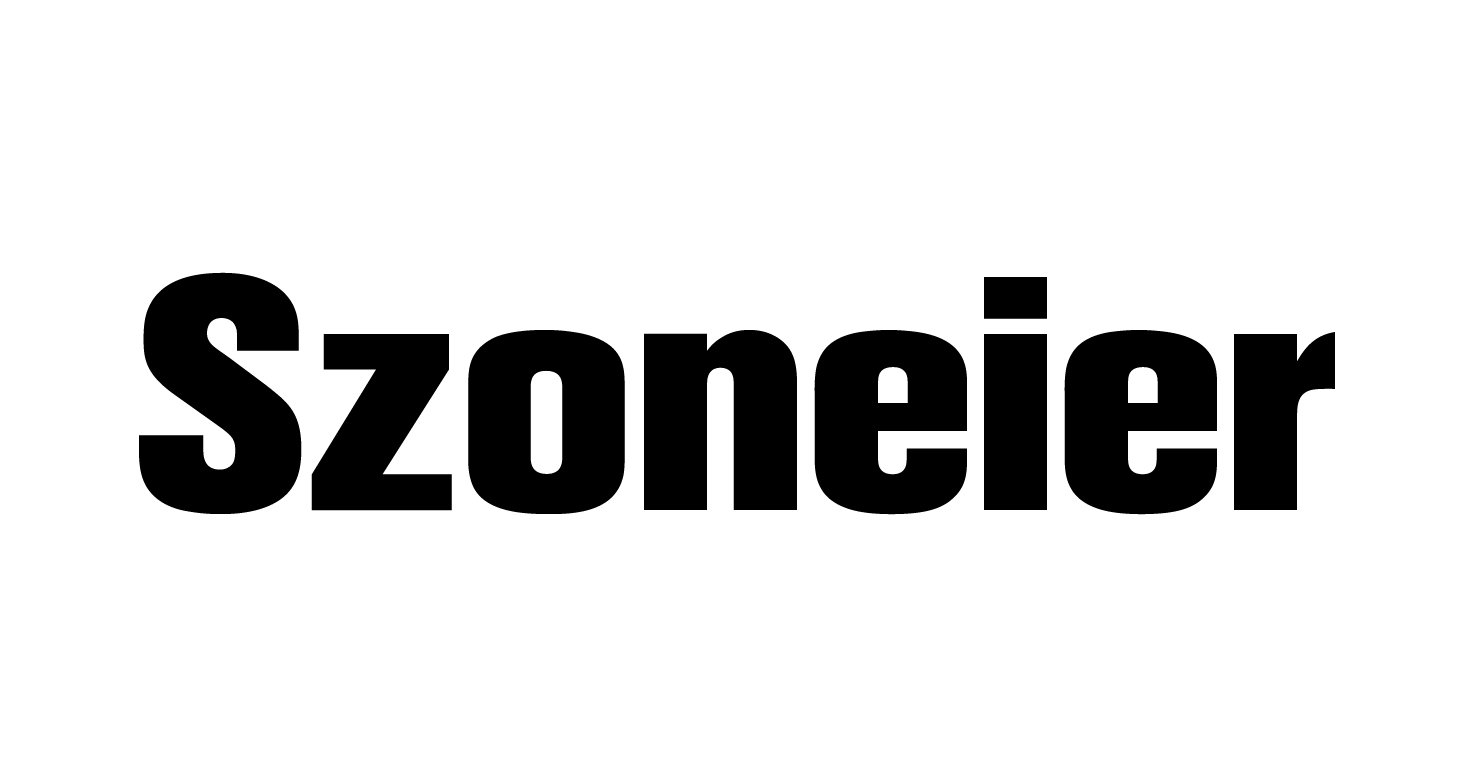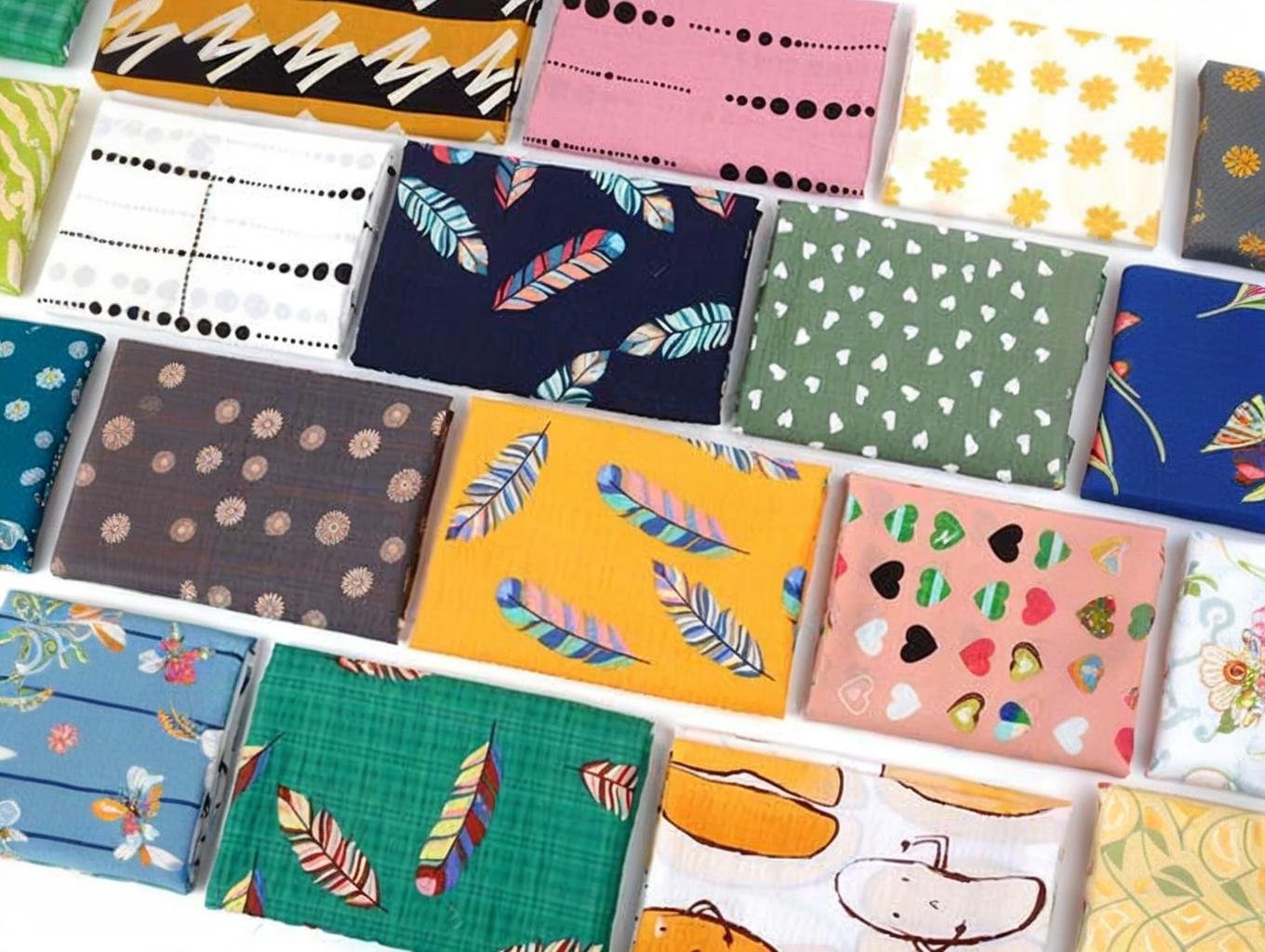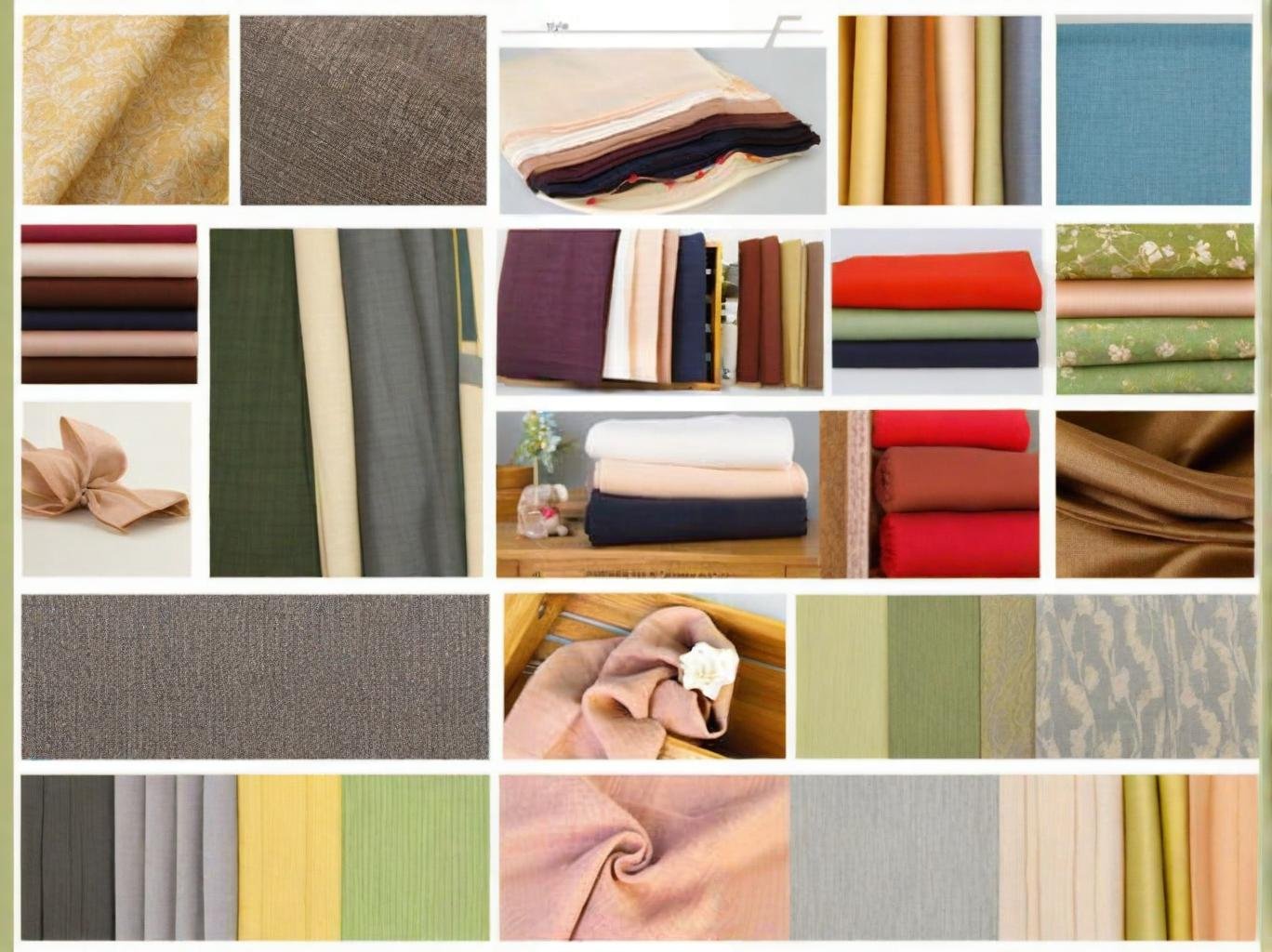Rayon Fabric vs Cotton: Which Is Better for Bulk Apparel Manufacturing?

When it comes to scaling apparel production, the choice of fabric isn’t just about how a garment looks—it’s about how it performs, costs, prints, and ultimately, how it sells. Two of the most commonly compared materials are rayon and cotton. While both are cellulose-based, they behave quite differently across design, production, and market response. Rayon and cotton each offer advantages for bulk apparel manufacturing. Rayon provides better drape, softness, and dye vibrancy, while cotton is stronger, more durable, and more breathable. The best choice depends on application, budget, and sustainability goals.
In this guide, we’ll break down the real-world differences between rayon and cotton, diving into fiber properties, manufacturing impact, dye performance, and end-use suitability. You’ll find insights not just from labs, but from actual sourcing decisions made by modern fashion producers. Let’s begin with the foundation: the core differences between the two fibers.
1. What Are the Core Differences Between Rayon and Cotton Fabrics?
Rayon and cotton are both plant-based, but rayon is classified as semi-synthetic due to its industrial processing, whereas cotton is a natural fiber. Rayon is made by chemically converting purified cellulose into fibers, while cotton is spun directly from the seed hair of the cotton plant. The key difference between rayon and cotton is that rayon is regenerated cellulose made through chemical processing, offering silk-like softness and drape, while cotton is a natural fiber known for breathability and durability.
Comparing the DNA of Rayon and Cotton
▸ Origin & Composition
| Feature | Rayon | Cotton |
|---|---|---|
| Source | Regenerated cellulose from wood pulp | Natural cellulose from cotton plant |
| Fiber Category | Semi-synthetic | Natural |
| Processing | Chemically treated, extruded into fibers | Mechanically cleaned and spun |
▸ Fiber Structure
- Rayon: Smooth, consistent diameter, with low natural twist—ideal for softness and flow
- Cotton: Has a twisted ribbon-like structure, giving it more resilience and strength
▸ Texture & Visual Properties
- Rayon: Silky, fluid drape, often used to mimic silk or modal
- Cotton: Matte finish, firmer hand-feel, absorbs moisture well
▸ Example Use Case:
In women’s resortwear, rayon is often chosen for its drape and flowy silhouette. A Bali-based fashion label uses 100% rayon in its kaftan collection to create a luxurious feel that cotton can’t easily replicate.
2. How Do Rayon and Cotton Compare in Terms of Cost for Large-Scale Production?
Cost is one of the most decisive factors in apparel manufacturing. Both cotton and rayon have competitive pricing—but rayon tends to be cheaper in raw material form while cotton’s value increases based on fiber length and organic certification. Rayon is generally more cost-effective than cotton in bulk sourcing due to lower raw fiber prices and better printing efficiency, though cotton may offer longer lifecycle value and brand familiarity.
Cost Factors in Bulk Fabric Procurement
▸ Average Price Comparison (2024 Estimates)
| Material Type | Cost per Kg (USD) | Influencing Factors |
|---|---|---|
| Regular Viscose Rayon | $1.50–$2.80 | Wood pulp source, processing plant |
| Modal Rayon (Premium) | $2.50–$3.50 | Certified pulp, softness, brand use |
| Conventional Cotton | $2.00–$3.20 | Fiber length, seasonality, region |
| Organic Cotton (Certified) | $3.50–$5.00+ | GOTS certification, water cost |
▸ Production Efficiency
- Rayon requires fewer processing steps for softness—no need for heavy softening or enzyme washes
- Cotton may need more finishing for print sharpness and shrinkage control
▸ Lifecycle Cost Implications
- Cotton often lasts longer in heavy-use garments (e.g. T-shirts, workwear)
- Rayon may wear out faster with repeated machine washing—though modal and lyocell are more durable
▸ Case Insight:
A South American casualwear brand shifted from 100% cotton to a 60/40 cotton-rayon blend. This allowed them to cut fabric costs by 22% while maintaining a “natural touch” in their marketing narrative. The move also reduced dye costs due to rayon’s better absorption.
3. Which Fabric Performs Better in Moisture Management and Breathability?
Breathability and moisture-wicking are essential for garments meant for everyday wear, active use, or tropical markets. Both rayon and cotton have strong reputations in this space, but they function differently. Cotton is more breathable and better at absorbing and releasing moisture, making it ideal for sweat-prone clothing. Rayon also absorbs moisture well but may feel clingy in very humid conditions due to slower evaporation.
Thermal and Moisture Behavior Under Real-World Conditions
▸ Moisture Regain Capacity
| Fiber Type | Moisture Regain (%) | Effect on Wearer |
|---|---|---|
| Cotton | 7–8% | Absorbs sweat and allows for evaporation |
| Rayon (Viscose) | 11–13% | Absorbs more but releases more slowly |
| Modal | 11–13% | Absorbs like rayon but stays dryer to touch |
▸ Breathability Ranking
- Cotton: Best suited for hot climates; breathable and quick-drying
- Rayon: Feels cooler initially but can trap moisture if not finished properly
- Modal/Lyocell: Superior moisture control among rayon types
▸ Skin Comfort in Humidity
Cotton’s texture stiffens slightly when damp, while rayon becomes clingier. For indoor or dry climates, rayon’s cool touch is welcome. But for physically active wear, cotton’s performance remains preferred.
▸ Practical Insight:
An Indian sleepwear label found that rayon-based nightgowns were preferred in cooler weather, while cotton-based designs sold better in the summer months when perspiration levels are higher. Customer reviews frequently mentioned “breathability” as a deciding factor.
4. Is Rayon or Cotton More Suitable for Dyeing, Printing, and Color Retention?
In high-volume production, dye uptake and print quality can influence fabric costs, visual impact, and product performance. Rayon is well known for its deep dye affinity, while cotton’s performance can vary based on its finish and fiber length. Rayon excels in dye absorption and produces more vibrant colors and detailed prints than cotton, making it ideal for fashion-forward designs or graphic-heavy collections.
Print and Color Behavior in Manufacturing
▸ Dye Types Commonly Used
| Dye Type | Compatible with Cotton | Compatible with Rayon | Color Depth |
|---|---|---|---|
| Reactive Dyes | Yes | Yes | High |
| Vat Dyes | Yes | Limited | Medium–High |
| Pigment Dyes | Yes | Yes | Medium |
| Disperse Dyes | No | No | N/A |
▸ Colorfastness Ratings (ISO 105 Standards)
| Fabric Type | Wash Fastness | Light Fastness | Rub Fastness |
|---|---|---|---|
| Cotton (Reactive) | 4–5 | 4–5 | 4 |
| Rayon (Reactive) | 4–5 | 3–4 | 3–4 |
| Modal (Reactive) | 4–5 | 4–5 | 4–5 |
▸ Visual Quality in Printing
- Rayon allows for sharper details and higher color penetration—ideal for florals, abstracts, and tie-dye.
- Cotton gives more muted results unless mercerized or treated for enhanced dye receptivity.
▸ Real Case Example:
A North African textile printer specializing in scarves moved to 100% rayon for their digitally printed line. They reduced dye costs by 12%, while boosting perceived color intensity in catalog photography—resulting in a 22% higher click-through rate on online product listings.
5. How Do Rayon and Cotton Behave in Industrial Washing and Finishing Processes?
Garments meant for mass production must withstand commercial washing, finishing treatments, and consumer-level laundering without excessive damage or shape distortion. This is where durability and wash performance become critical. Cotton generally outperforms rayon in industrial laundering due to its structural integrity, while rayon requires gentler handling to avoid shrinkage, stretching, or fiber weakening.
Shrinkage, Wrinkle, and Wear Analysis
▸ Dimensional Stability (Shrinkage Tendency)
| Test Type | Cotton (Pre-shrunk) | Viscose Rayon | Modal |
|---|---|---|---|
| After First Wash (30°C) | 2–3% | 6–10% | 3–4% |
| After Five Washes | ~5% | Up to 15% | ~6% |
- Cotton holds up better with repeated washing, especially if combed or mercerized
- Rayon is prone to dimensional changes unless blended or stabilized
▸ Finishing Compatibility
- Cotton can tolerate enzyme washes, sandblasting, and silicone softeners
- Rayon requires lower temperature settings during calendaring or resin finishes
▸ Wrinkle and Crease Resistance
| Fabric Type | Wrinkle Resistance (1–5) |
|---|---|
| Cotton (Untreated) | 2–3 |
| Rayon (Untreated) | 2 |
| Cotton + Resin | 4 |
| Rayon + Softener | 3 |
▸ Case Study:
A Bangladesh-based t-shirt producer reported higher fabric returns on rayon items due to post-production shrinkage. After switching to modal-rayon blends with heat stabilization, defect rates dropped by 28% and final garment shape retention improved.
6. What Are the Environmental and Sustainability Considerations of Each Fabric?
Sourcing decisions today are increasingly influenced by sustainability metrics. Both rayon and cotton come with environmental concerns, but solutions like certified organic cotton and closed-loop rayon offer viable improvements. Cotton’s high water usage and pesticide reliance contrast with rayon’s chemical-heavy processing. However, organic cotton and sustainable rayon (e.g., TENCEL™) offer responsible alternatives for environmentally conscious production.
Life Cycle Impact and Certifications
▸ Environmental Impact Snapshot
| Factor | Conventional Cotton | Standard Rayon | Lyocell/Modal |
|---|---|---|---|
| Water Consumption | Very High (~10,000L/kg fiber) | Moderate | Low |
| Chemical Use | Moderate–High (fertilizers) | High (sulfuric acid etc.) | Low (NMMO solvent) |
| Biodegradability | Yes | Yes | Yes |
| Energy Use | Moderate | High | Moderate |
▸ Key Certifications to Look For
| Certification | Applies To | Purpose |
|---|---|---|
| GOTS (Organic Cotton) | Cotton | Verifies organic farming, processing |
| OEKO-TEX Standard 100 | Both | Tests for harmful substances |
| FSC (Rayon) | Rayon | Responsible forestry sourcing |
| EU Ecolabel (Lyocell) | Lyocell | Certifies lower ecological impact |
▸ Sustainability in Brand Storytelling
Eco-conscious consumers often resonate with transparent sustainability claims. Modal and lyocell allow brands to promote water savings, while organic cotton emphasizes farming ethics.
▸ Industry Insight:
A German babywear brand switched from conventional cotton to GOTS-certified cotton and achieved a 32% increase in customer retention due to enhanced brand trust. Meanwhile, a California-based yoga brand transitioned to TENCEL™ for its softness and biodegradable appeal, cutting their fabric water footprint by 65%.
7. Which Fabric Offers Better Comfort, Drape, and Aesthetic Appeal for Apparel?
Comfort and visual appeal can directly influence a garment’s success. Rayon’s smooth finish and silk-like drape often appeal to fashion brands, while cotton’s breathable, structured feel suits casual and functional wear. Rayon provides superior drape and softness, making it ideal for flowing, elegant garments, while cotton offers better body and texture for structured styles and activewear.
Style, Feel, and Function
▸ Hand Feel Comparison
| Fabric | Texture Description | Perceived Softness |
|---|---|---|
| Rayon | Silky, cool to touch | Very High |
| Modal | Ultra-soft, consistent hand | Extremely High |
| Cotton (Combed) | Smooth but matte | High |
| Cotton (Raw) | Crisp, slightly coarse | Medium |
▸ Drape and Flow Index (Tested by ASTM D4031)
| Fabric | Drape Coefficient (Lower = Better Drape) |
|---|---|
| Rayon | 0.35 |
| Modal | 0.28 |
| Cotton | 0.48 |
- Rayon: Best for dresses, tunics, scarves, and sleepwear
- Cotton: Ideal for t-shirts, shirts, uniforms, and children’s clothes
▸ Style Match by Garment Category
| Category | Preferred Fabric | Why |
|---|---|---|
| Flowy Dresses | Rayon/Modal | Drape and vibrancy |
| Corporate Shirts | Cotton | Structure and wrinkle treatment |
| Pajamas/Loungewear | Modal/Cotton blend | Softness and breathability |
| Kidswear | Cotton | Skin safety and durability |
▸ Real-World Feedback:
An Australian women’s resortwear brand launched a rayon maxi dress line and received positive customer reviews highlighting phrases like “feels like silk” and “light but luxurious.” Meanwhile, their cotton kaftan line appealed more to mothers and older buyers valuing traditional comfort.
8. How Should Apparel Manufacturers Choose Between Rayon and Cotton for Bulk Orders?
Choosing between rayon and cotton depends on the intended product use, brand image, customer market, and operational priorities like cost, lead time, and sustainability alignment. Apparel manufacturers should select rayon for fashion-focused, vibrant, and drapey designs, while cotton is better for structured, breathable, and long-lasting garments. Blends offer a versatile solution for balanced performance.
Decision-Making Framework for Fabric Sourcing
▸ Strategic Sourcing Factors
| Consideration | Best Choice | Reasoning |
|---|---|---|
| Vibrant Colors & Prints | Rayon | Superior dye uptake and detail retention |
| Sweat-prone Applications | Cotton | Excellent breathability |
| Silky Feel | Rayon/Modal | Luxurious hand feel and drape |
| Durability | Cotton | Better structural integrity |
| Eco-Friendly Messaging | Organic Cotton/TENCEL | Certified options appeal to green buyers |
▸ Suggested Blends for Hybrid Needs
- 60% Cotton / 40% Rayon: Softness + durability
- 50% Modal / 50% Cotton: High-end feel with structure
- TENCEL™ blends: Eco and performance in one
▸ Final Tips for Fabric Managers:
- Sample both fabrics in your core product silhouettes before finalizing
- Consider regional preferences (e.g., cotton-dominant in the Middle East, rayon preferred in Southeast Asia)
- Align fabric selection with marketing storylines—luxury, heritage, or eco-focus
▸ Buyer Testimonial:
A Canadian yoga wear company shared that after switching from 100% cotton to a modal-cotton blend, their return rate decreased by 17%, and average review ratings climbed from 4.1 to 4.6. Consumers noted “buttery softness” and “non-sweaty” wear even after long sessions.
Making the Smart Fabric Choice for Your Brand
Whether you lean toward the breathable confidence of cotton or the elegant fluidity of rayon, the best fabric for your bulk apparel manufacturing comes down to matching fiber performance with product goals. There’s no absolute winner—only smarter sourcing decisions based on the full lifecycle of your garment.
For brands seeking customization, fabric innovation, and fast production turnaround, SzoneierFabrics offers a full spectrum of rayon, cotton, and blended fabric solutions tailored to your unique product needs.
Ready to customize your ideal fabric for mass apparel production? Contact SzoneierFabrics now to request free samples, discuss low-MOQ development, or book a consultation with our fabric experts.
rayon vs cotton fabric, rayon fabric for clothing, cotton fabric for manufacturing, bulk apparel fabric comparison, cotton vs rayon textile, best fabric for t-shirts, moisture wicking fabrics, breathable fabrics comparison, rayon shrinkage issues, cotton durability in washing, sustainable fabric options, eco friendly fabrics for brands, how rayon is dyed, cotton vs rayon comfort, rayon color retention, cotton fabric properties, rayon textile pros and cons, cotton bulk fabric supplier, rayon manufacturer for clothing, difference between cotton and rayon, fabric sourcing guide, bulk fabric purchasing tips, cotton and rayon blends, best fabric for summer wear, rayon in tropical climate, industrial washing of rayon, dye fastness rayon vs cotton, cotton fabric cost per meter, advantages of rayon fabric, high-quality rayon fabrics,
Can't find the answers?
No worries, please contact us and we will answer all the questions you have during the whole process of bag customization.
Make A Sample First?
If you have your own artwork, logo design files, or just an idea,please provide details about your project requirements, including preferred fabric, color, and customization options,we’re excited to assist you in bringing your bespoke bag designs to life through our sample production process.



